Readers have been asking what my experience has been so far with my new camera, the Canon R5. I’ve had it for about three weeks now but due to adverse shooting conditions and bumps in the road of life I haven’t yet had a lot of experience with it. At some point it’s my intention to post a fairly comprehensive mini-review but I’m not there yet.
However, I thought an experience I had with a Double-crested Cormorant in flight six days ago provided some telling evidence regarding the autofocus capabilities of the R5. So today I decided to share it, for what it’s worth.
If you haven’t already guessed, this post is heavy on photogeek so it may have little interest for some of my readers. I hope others will find it useful,
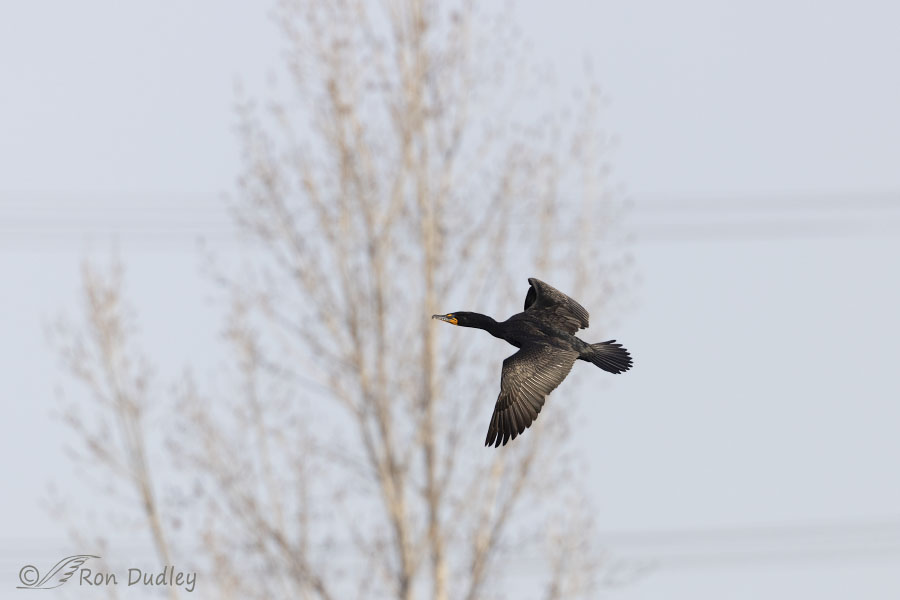
The cormorant was pretty far away as it circled the pond before flying off to a new destination. This is the first shot in a series of eight consecutive photos without any skips. Sharp eyes will notice that I was dealing with power lines in the background so some of the photos in the series aren’t good for much of anything except as a demonstration of the AF capabilities of the R5.
This version of the photo is uncropped to give you an idea of how far away the bird was. I was shooting in cropped frame mode so if I’d been shooting full frame the cormorant would have been even smaller in the frame.
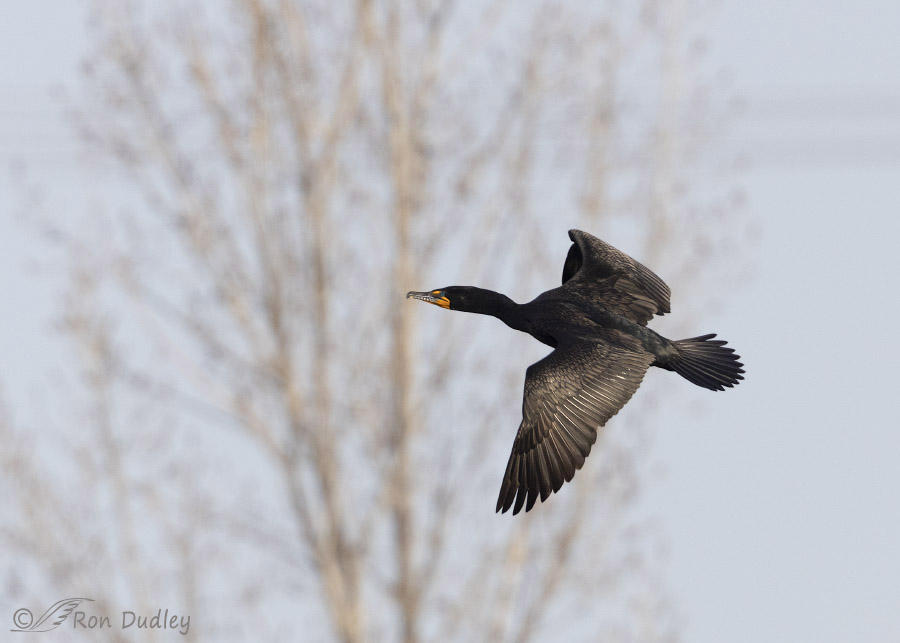
1/3200, f/6.3, ISO 800, Canon R5, Canon EF500mm f/4L IS II USM + 1.4 tc, not baited, set up or called in
This is a cropped version of the previous image. The entire series of eight photos has been cropped the same amount and that amount is substantial. The series needs very little narration from me so I’ll wait until the end to provide my conclusions.
1/3200, f/6.3, ISO 800, Canon R5, Canon EF500mm f/4L IS II USM + 1.4 tc, not baited, set up or called in
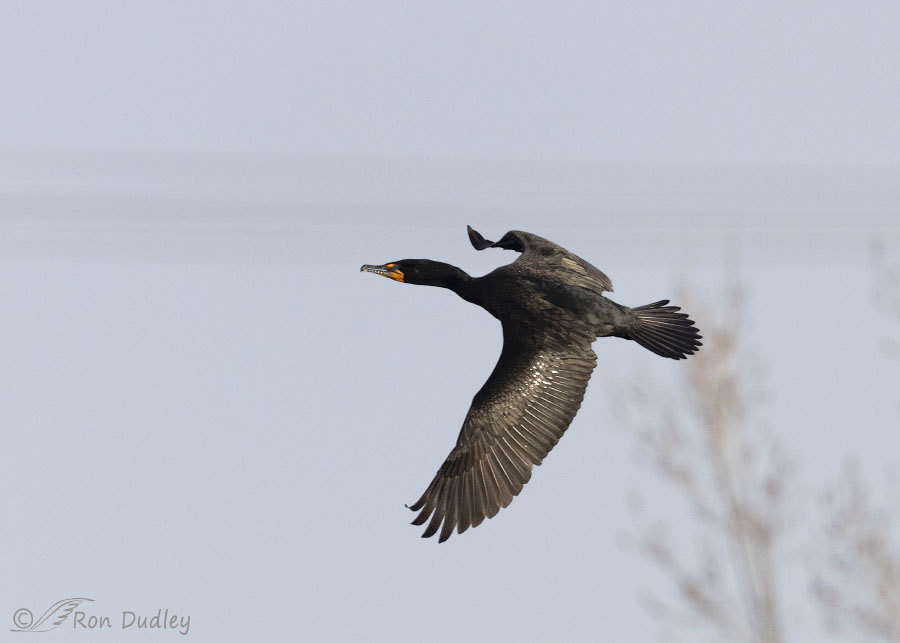
1/5000, f/6.3, ISO 800, Canon R5, Canon EF500mm f/4L IS II USM + 1.4 tc, not baited, set up or called in
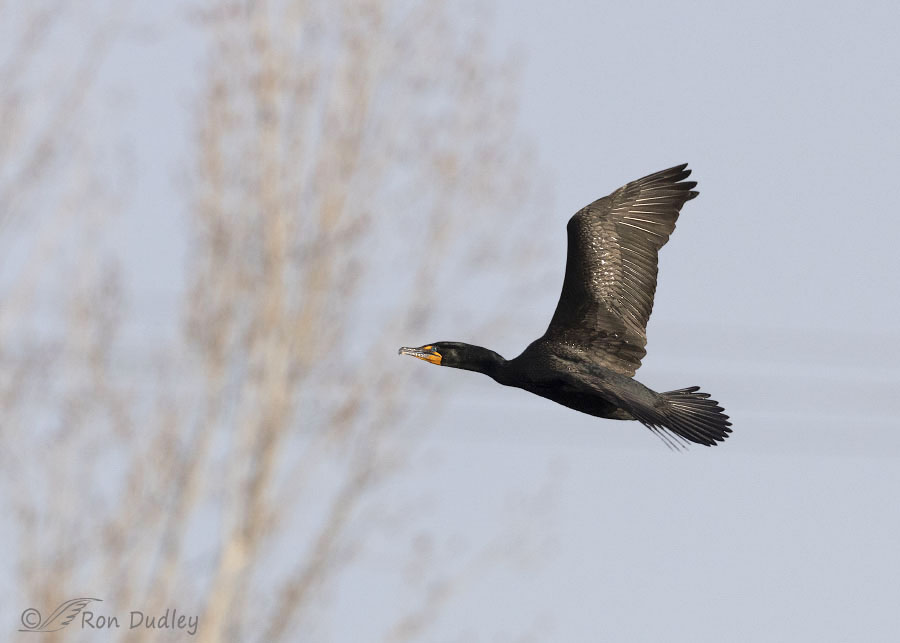
1/5000, f/6.3, ISO 800, Canon R5, Canon EF500mm f/4L IS II USM + 1.4 tc, not baited, set up or called in
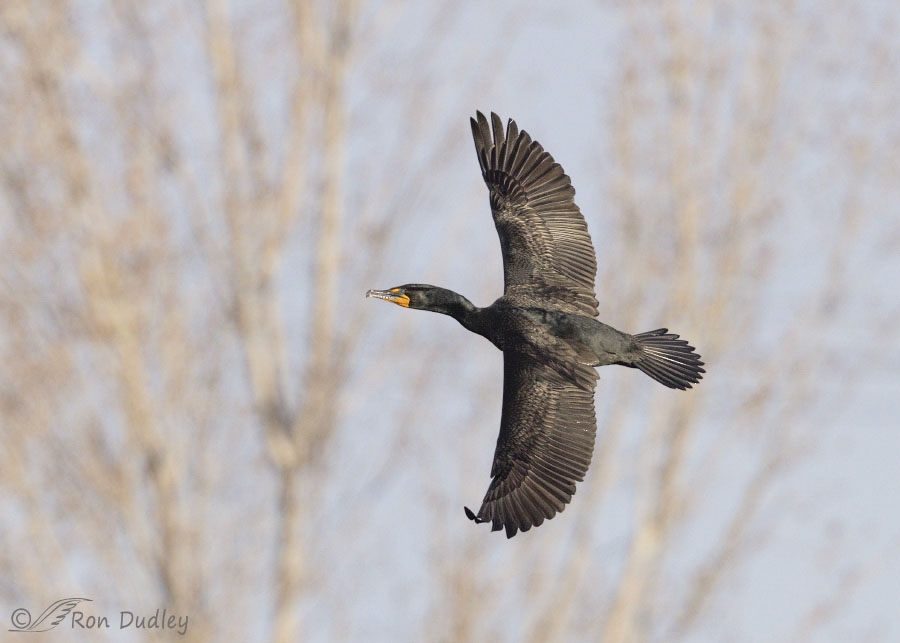
1/5000, f/6.3, ISO 800, Canon R5, Canon EF500mm f/4L IS II USM + 1.4 tc, not baited, set up or called in
If this photo looks familiar it’s because I posted it to my blog two days ago.
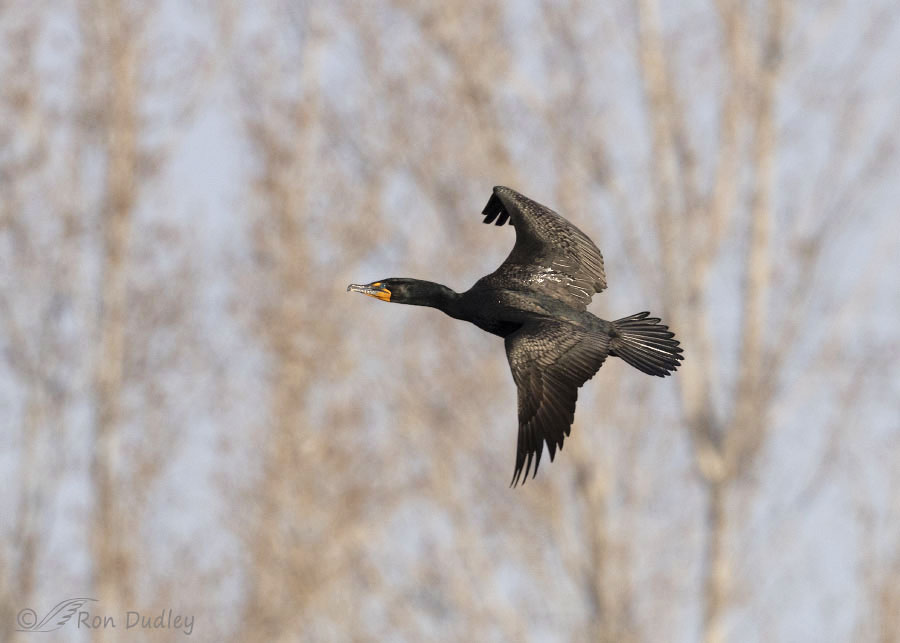
1/5000, f/6.3, ISO 800, Canon R5, Canon EF500mm f/4L IS II USM + 1.4 tc, not baited, set up or called in
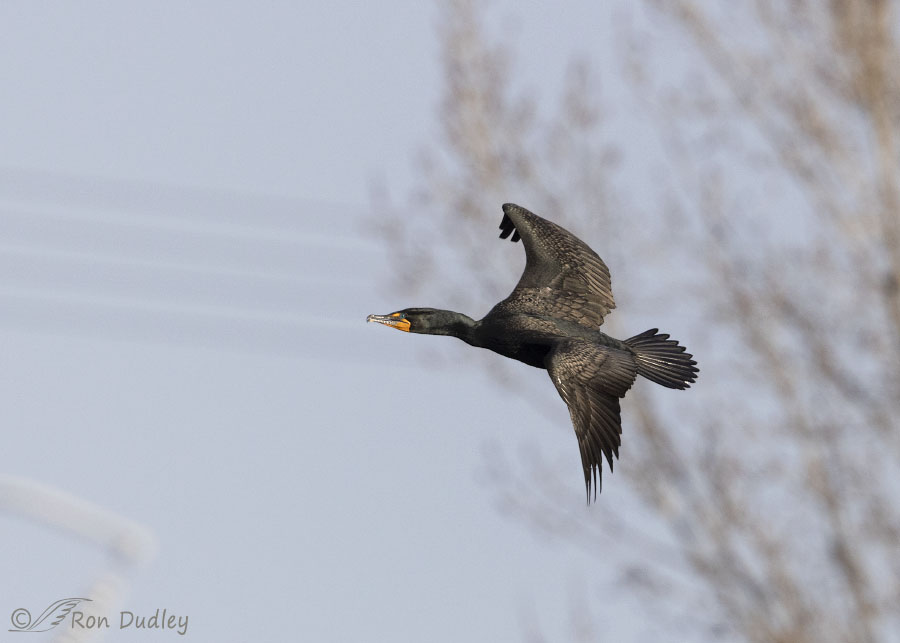
1/5000, f/6.3, ISO 800, Canon R5, Canon EF500mm f/4L IS II USM + 1.4 tc, not baited, set up or called in
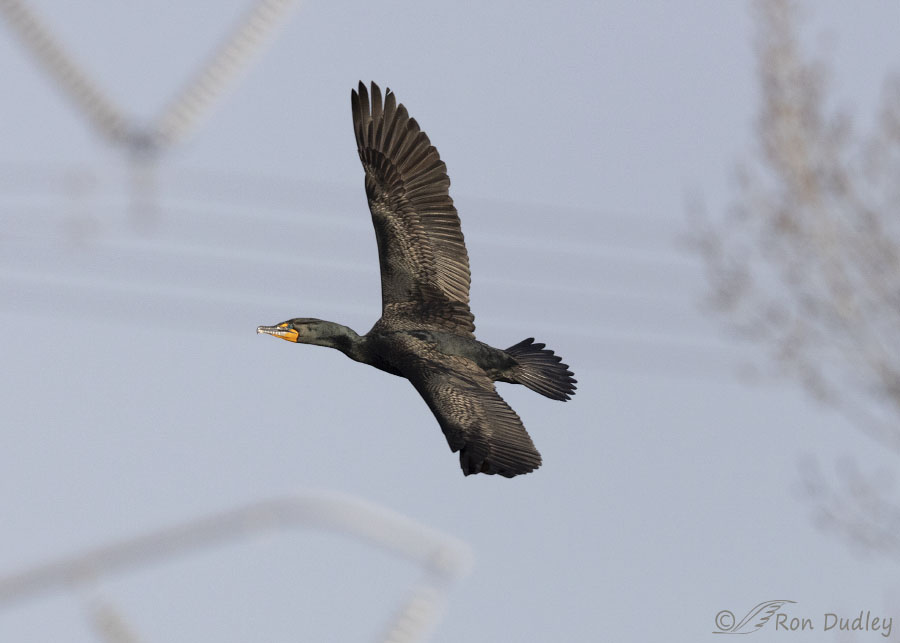
1/5000, f/6.3, ISO 800, Canon R5, Canon EF500mm f/4L IS II USM + 1.4 tc, not baited, set up or called in
If I’d been shooting with my previous camera, the Canon 7D Mark II, I’d have been lucky to get two or three sharp shots of the cormorant. The bird was small in the frame and bouncing around in my viewfinder so it would have been very difficult, if not impossible, to keep my active focus point locked on to my subject for this many photos.
But with the R5’s animal/eye detect with tracking my single active focus point stayed locked on to the bird no matter where it was in the frame. That wouldn’t have happened with the Mark II. I’m not saying the R5’s AF system is infallible, it isn’t. But based on this experience and others like it I’m convinced its a vast improvement over what I’ve been used to. I’m duly impressed.
The R5’s AF system is amazing but it’s complicated so the setup of the buttons and dials I’m using is very different from that of the Mark II. For example, I’ve assigned three buttons for different functions of back-button AF instead of the single back-button AF I was using on the Mark II. As a result I keep hitting the wrong button in crucial situations and messing up my photos. I did it again two days ago with what would have been my very best shots of the entire morning.
Things won’t get any better until I get my muscle memory retrained and that takes time in the field. And a much better weather/light forecast than we have at the moment.
Ron
PS – One of the decisions I’ve been trying to make is whether my default will be to shoot in full frame or cropped frame. At this point I’ve pretty much decided to shoot in full frame most, if not all, of the time. I might as well take advantage of the full 45MP available on the R5.
I was concerned about having to deal with the various issues of such huge file sizes but Canon’s compressed RAW (cRAW) whittles the file size down to 27MP without any loss of quality or detail. I have no idea how they pull off that amazing trick but I’m grateful for it. My Mark II shot at 20MP so that’s not much of an increase in actual file size.


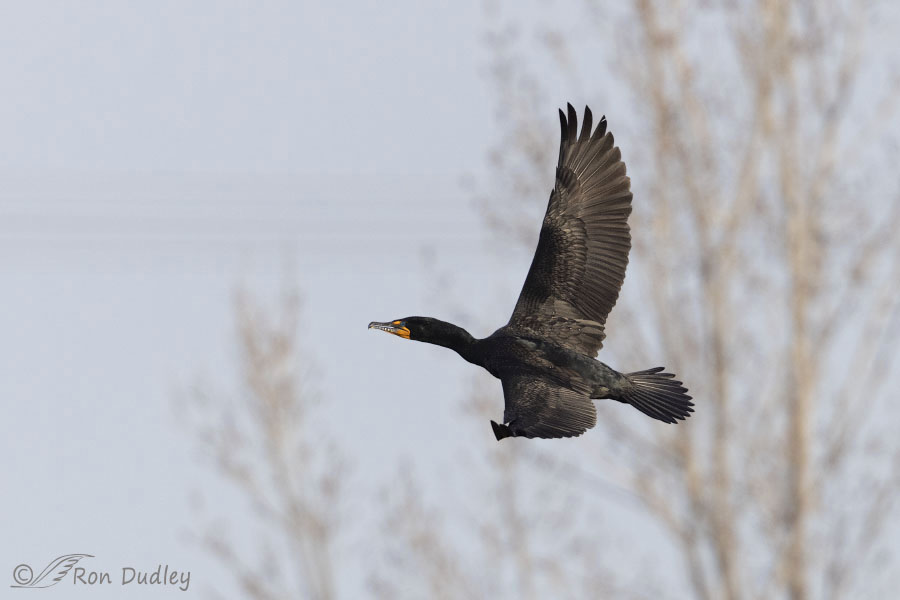
I just now stumbled upon your site while looking for more detail on mating rituals of geese and then saw these very sharp photos of cormorants in flight, which is a hard thing to do, as I have found out with my Canon 7D Mark 2. The Nikon R5 certainly does a great job. Congrats!
It is canon R5 and not Nikon
My mistake! Nikon mirrorlesses are Z’s, Canon’s are R’s.
I’m a DSLR dilettante (still grappling with my 77D). I both enjoy and envy your photos, and appreciate you providing the specs for each.
So many things, so little time.
Thank you, Michael.
Thanks Ron, I like the info. One of my questions was going to be are you shooting full frame or crop option. Do you see much difference when you crop a photo in processing on the quality of the image when you use crop vs full frame?
April, I see no difference if both photos are cropped to the same number of MP. And that makes sense.
One of the advantages of shooting full frame is that it gives me better chance to keep a bird in the frame without losing any image quality or detail compared to if I had taken it cropped frame.
A very interesting and useful post that makes me want to read the mini-review you intend to write.
Thank you very much Ron.
Thanks, Jorge. I hope I can do that review sooner rather than later but it’ll take me a while before I’ve had enough experience with the R5 to feel confident about my conclusions.
Ron, I really enjoyed your post today as I wrestle with my own camera, Pentax k3, trying to get eagles and ospreys in focus as they fly and dive. Your new camera sounds amazing and the technology keeps getting better and better. I always shoot in manual and love that my camera has 3 buttons and 2 wheels in very comfortable locations. The thought of Learning a new body and system and the expense that goes with it is overwhelming. I will just have to enjoy watching you as you develop the skill to make this camera shine.
Thanks for the enjoyable pics and dialog each day.
Reid
“The thought of Learning a new body and system and the expense that goes with it is overwhelming”
You said it about as well as it can be said, Reid. It took me nearly two years to make the jump, mostly for the very reasons you mention.
I’m not a photographer (can barely use the camera on my cell phone!), but I sure enjoyed watching this bird fly across the landscape. Neat to watch its progress across the trees, and the wing flaps. A video in stills! Thank you, and thanks to your new camera for allowing it.
I’m glad to know you enjoyed it, Carolyn. Thanks.
Thank you. And colour me awed that you are prepared to retrain your muscle memory. I avoid that challenge whenever I can (and probably more often than I should).
“I avoid that challenge whenever I can (and probably more often than I should”
That description fits me to a T, EC. I had to spread my wings for this venture.
I’m not a photographer (nor do I play one on TV) and I very much enjoyed this post — photogeekery and all. I’m fascinated by what newfangled tech gadgets can do in the right hands and you have fed that interest this morning. And with some pretty slick Cormorant shots, I might add. 🙂
Good to know, Marty. I was afraid that all of my readers that aren’t bird photographers would be bored to tears.
Interesting that the exposure time went from 1/3200 in the first two frames to 1/5000 in the rest. Is it my imagination or are the last six photos a bit sharper? I read a little bit about the eye detect. What an amazing feature.
Lyle, the sharpness of all the images looks about the same to me. But then I don’t have the best eyesight in the world.
Your information on the R5 is very helpful to me. I also shoot with either a 7D Mark II or a 1DX Mark II. The Animal/eye detection on the R5 and the lighter weight are appealing to me, but the overall cost of everything still has me skittish. Are you happy using an adapter with your current lenses, or are you leaning towards getting the 100-500mm that was made for the R5?
Thank you for your blog and all the good info!
René, having to use an adapter was one of my biggest concerns in going mirrorless. I love my EF 500 f/4 so I didn’t want to give it up.
I shouldn’t have worried. I don’t even know I have the adapter on. Mirrorless cameras don’t have a mirror box in front of the camera so the overall length of my gear hasn’t changed. Using the adapter hasn’t been an issue at all for me.
The expense is another matter. As you know, the R5 isn’t cheap.
Good to know. Thank you for your insight. Every bit of information helps.
Love your blog!
Very interesting Ron, but way over the head of a guy who uses a super-zoom bridge camera. I have though met with birding friends out there who use cameras like yours who have demonstrated for me some of the amazing things they can do and especially with AF. One of the things they have shown me that amaze me are in-flight shots that I am really incapable of getting. If I were younger I would be really tempted, but at my age I will stay where I am.
Thanks, Everett. Each of us has to decide what’s best for us, and practical for us, given our own situation. I seriously considered sticking with my old gear for the duration but in the end I was seduced by the R5.
WOW! I’m impressed as well. Love these shots!!
I am now in the market for a new camera, but my brain says Not to go with the R5. Mostly because of my age and loss of brain power, if you know what I mean? However, I have to believe you have to keep pushing oneself, otherwise…….
Dick, the R6 has the same AF capabilities as the R5 and it’s much cheaper. I’m quite confident that you’re as capable of learning the new system as I am. The main difference between us is that I’m pretty sure I cuss more, a lot more, than you would during the learning process… 🙂
LOL!!
I don’t know about that, even though I was an officer in the service I did my share of cussing! VBG!
OK, I will look into the R6, many thanks.
Appreciate your comprehensible report on your new equipment and looking forward to more data and more excellent photos. Thank you.
Thanks, Burrdoo.
I’m impressed! Appears the work/frustration involved in trying to get the settings where you want them and the ongoing muscle memory challenges are proving to be worth it. 🙂
“challenges are proving to be worth it”
So far, Judy. There’s a few other issues I’m still working on.